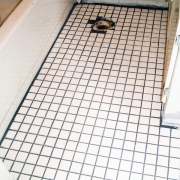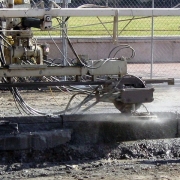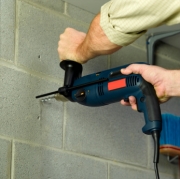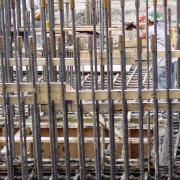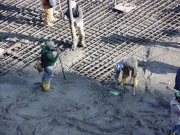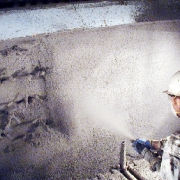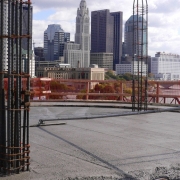Reinforcing Steel (Rebar) embedded in concrete provides the necessary resistance to stresses which arise from flexing and bending, allowing reinforced concrete to be used in many applications in the construction industry. Concrete has excellent compressive strength, but it is weak in tension. Reinforcing steel has excellent tensile strength but must be held in place to be effective. Thus, steel reinforced concrete provides a strong structural material or composite that can be aesthetically pleasing, economical, reliable, and durable. Fabricated from carbon steels with high yield strengths, the rebar is also ductile. The coefficients of thermal expansion of concrete and carbon steel are similar, so that internal stresses due to expansion and contraction are minimized. The concrete bonds strongly to the surface of the steel so that stresses are transferred efficiently from the concrete to the rebar. This composite is now widely used for the construction of concrete slabs, concrete walls, concrete beams, concrete columns, elevated concrete floors, and concrete footings and foundations. In the concrete, the rebar is contained in an alkaline environment and a passive film of iron oxide is formed, protecting the steel from corrosion. However, this protection is lost if the concrete structure is exposed to seawater or deicing salts. In these conditions, galvanized (zinc-coated) or epoxy-coated rebar must be used to realize the expected durability for the reinforced concrete.
